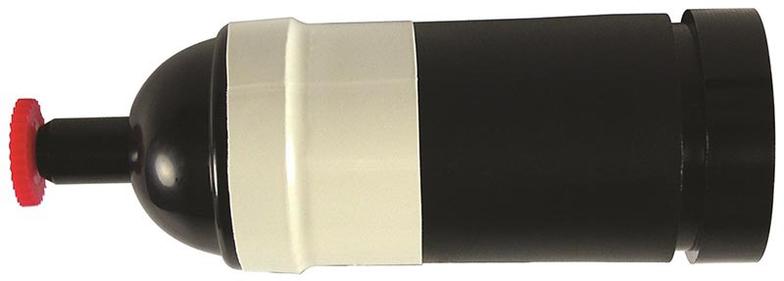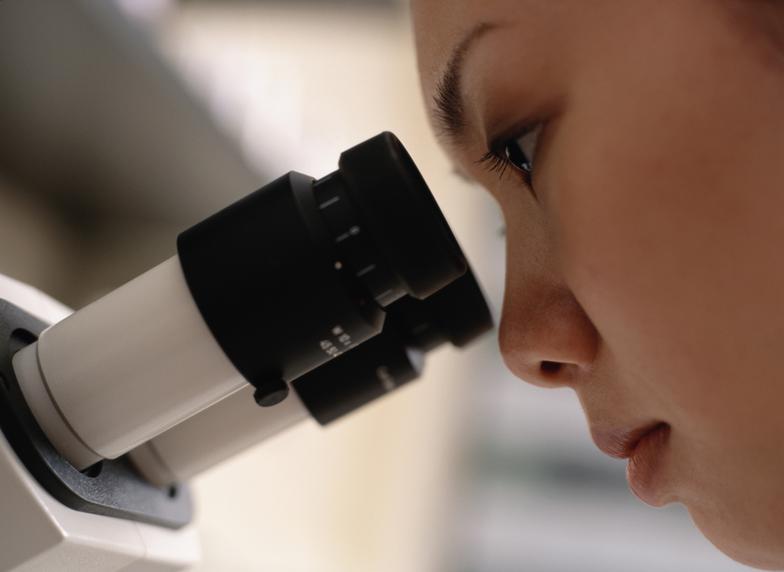Asbestos Air Monitoring
Interested in learning more?
Tri-Tech can perform any type of asbestos
air monitoring. There are 2 basic test methods:
Phase Contrast Microscopy (PCM)
This is the method utilized in a majority of asbestos air testing projects. This method involves filtering air through a sample cartridge. Particulate matter (dust and fibers) are trapped on the sample filter. The filter is then dissolved in a laboratory and all fibers of a certain length are counted. This method does not attempt to resolve asbestos and non-asbestos fibers. Therefore, the method is subject to interferences from non-asbestos fibers. However, the health standards that are used for this method assume that a fraction of the fibers counted are not asbestos. The size range of the counted fibers reflects the fact that fibers within a certain size range tend to become trapped in the lungs and that the human body has processes to remove the longer or shorter fibers. Interferences are not a problematic as you would think as most household sources of fibers (plants, animal hair, fabrics, fiberglass etc.) do not break down as finely into fine fibers. The sample result can provide a good short-term understanding of air quality as a total fiber count. Commonly used for most residential floor tile and thermal insulation abatements. Got it! Take me to the Clearance page!
Transmission Electron Microscopy (TEM)
This is a more expensive test method utilized for asbestos air monitoring projects where an asbestos fiber specific result is required. This method is required for certain abatement projects in schools or as a confirmatory test when the PCM sample result fails and a fiber interference is suspected. This test can also be used in some circumstances to "fingerprint" a source of contamination when multiple types of asbestos are present (e.g. is a failing result from pipe insulation in the basement or the disturbance of attic insulation).
This method is similar to PCM in that it involves pumping air through a sample filter cartridge. Particulate matter (dust and fibers) are trapped on the sample filter. The filter is then dissolved in a laboratory and advanced microscopic methods are used to identify specific types of asbestos fibers and, if desired, other types of fibers present. This method can detect very thin fibers from highly refined asbestos missed by PCM and therefore is a more suitable test when "higher risk/higher grade" asbestos is present. The "fluffy" (friable) forms of asbestos tends to have the higher grades of asbestos and lower grades of asbestos were typically used in more non-friable materials such as floor tile. One disadvantage to this method is that the results are more difficult to interpret. Asbestos health standards were developed by years of PCM air monitoring at asbestos mills and similar locations where both asbestos and non-asbestos fibers were present. The health standard for TEM is somewhat arbitrary. TEM is valuable for asbestos air monitoring for potential impact to a living space from asbestos vermiculite insultaion in the attic because of the specificity of the test. The type of asbestos found in vermiculite is not typically detectable at background concentrations and does not occur in other asbestos building materials that may be found in the home. More about vermiculite asbestos.
Transmission Electron Microscopy (TEM) analysis of a PCM sample
While not an officially specified method, it is a generally accepted practice to attempt to discern a possible interference of a PCM sample by an additional TEM analysis. However, there is no assurance that a conclusive result can be obtained. PCM and TEM results do not directly correlate and there is no exact comparison basis or conversion factor that exists between the two test methods.
Health standards for PCM:
Michigan commercial clearance level=0.05 f/cc
School clearance level=0.01 f/cc
Urban outdoor air (background) =0.003-0.005 f/cc
Household background =<0.001-0.004 f/cc
Rural outdoor air (background)=<0.001-0.002 f/cc
f/cc=fibers per cubic centimeter
Health standards for TEM:
School clearance level=0.02 s/cc (70 s/mm2)
School background =<0.002 s/cc
Household background =<0.00005 s/cc
Urban outdoor air (background)=<0.00005 s/cc
Rural outdoor air (background)=<0.00001 s/cc
s/cc= structures per cubic centimeter ("structures" is uses in lieu of fibers to denote that TEM can detect fibrous structures not seen by PCM)
Comparison Criteria:
Breakin' It Down...
A typical adult breathes about an average of 12,000 cc of air per minute. At the school clearance limit, which is generally applied to residential testing, breathing more than 120 fibers per minute would be considered unsafe. Keep in mind that only a fraction of those fibers would likely be asbestos.
Case Study #1:
Homeowner DIY testing for a basement renovation revealed that asbestos acoustical drop ceiling panels were present in the basement and they had been disturbed prior to the homeowner knowing they were asbestos. Tri-Tech was asked to conduct air testing of the entire house. Fiber levels were found to be at the health limit of 0.01 fibers/cc on the first and second floor and at about half the limit (0.006 fibers/cc) in the basement. This illustrated how readily fine fibers could be dispersed upwards through the house.
Case Study #2:
A homeowner purchased a home where it was suspected that asbestos insulation was improperly removed in the boiler room. Tri-Tech was asked to conduct air testing of the basement. Fiber levels were found to exceed the health limit with a result of 0.02 fibers/cc. Proper abatement and decontamination of the boiler room was recommended as a precaution. The client was notified that an imminent health risk was not present since the result was still below the limit for a commercial building.
A PCM sample cassette
Air Sampling-What to Expect
For either the PCM or TEM test, a Tri-Tech air sampling technician will set up a pump to run a minimum of 100 minutes, but a test typically requires at least 2 hours. The technician will typically remain in the home during the air sample working off a laptop. However, alternative arrangements can sometimes be made such as starting the sample in the early morning and picking up the sample during the lunch hour or in the early evening by running the pump(s) at a lower sampling rate for an additional cost. The pumps are a little noisy so accommodations can be made if sensitive pets (or human residents) are present in the home.
Testing rates start from $155 for one PCM sample and $185 for one TEM sample. Additional travel fee for non-local locations.


